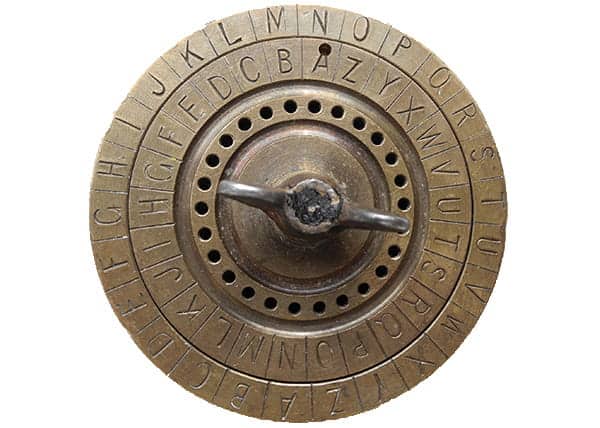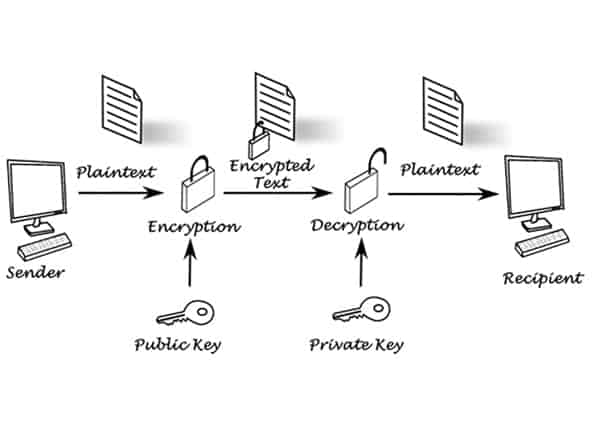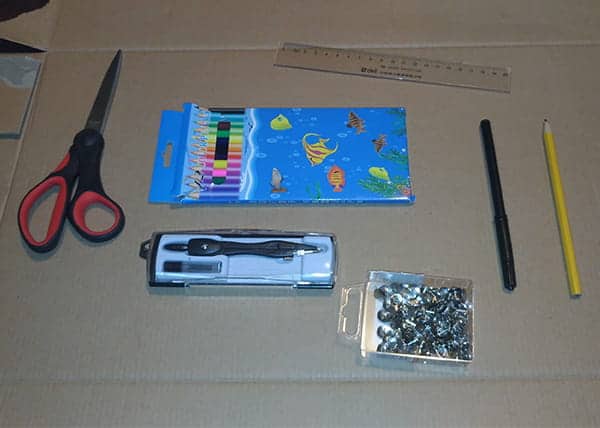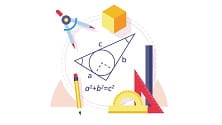Ever wanted to send a secret message to someone that only he or she will understand? Who didn’t! But there is an easier way than producing your own secret language. Cipher wheel! You encrypt the message with the secret key and only the person who knows that key can decrypt it. Find out how to be mysterious with your own cipher wheel!
Article Contents
1. What is Cryptography?1.1. History of Cryptography and Message Coding
1.2. Different ways of Encrypting Messages
2. Materials needed to make a Cipher Wheel
3. Instructions on making a Caesar Cipher Wheel
4. How to use the Caesar Cypher Wheel
4.1. Encrypting the message
4.2. Decrypting the message
5. What will you Develop and Learn
What is Cryptography?
Cryptography (cryptology) is a study of ways to conduct secure communication. More precisely, cryptography is investigating ways to encrypt and decrypt messages so they stay private and deals with developing protocols that can help with that. Word cryptography comes from the Greek words kryptós, which means “hidden” and graphein, which means writing.
History of Cryptography and Message Coding
Cryptography has been used from ancient times since there was always a need for keeping certain messages private. Oldest ciphertext comes from Egypt and is dated 1900 BCE, but different ways to encode messages have been found in various cultures, from Greece and Persia to India.
One of the more popular substitution ciphers, Caesar cipher, was invented by Julius Caesar as a way to send secret messages to his generals. It is also known as Shift Cipher.

In modern history, the most famous encrypting example was the Enigma machine which Germany used to encode their messages during World War 2. The British bombe was a decrypting machine envisioned and developed by Alan Turing at Bletchley Park, which had a tremendous impact on ending World War 2.
Today, lots of time and effort has been put in finding new and better ways to secure our communication and privacy. Cryptography is especially important in the field of internet security because of the huge amount of data flowing on the internet today and the danger of hacking private data.
Different ways of Encrypting Messages
In the past, cryptography focused on the ways to make certain messages (plaintext) incomprehensible (ciphertext). The reverse process, called decryption, translates ciphertext back into the plaintext.
The first methods to encrypt the messages were transpositions, the simple scrambling of the letters in the sentence (anagram). After that came the substitution cipher that represents an algorithmic way to encrypt messages. It uses the key (number) that shifts plaintext by the key number of letters (example: A becomes D if the key is 3).
Caesar cipher is an example of a substitution cipher. This key should be kept private between people involved in communication. However, this method is quite prone to brute force attacks, since there is a limited number of possible keys.
Later there were different methods where the key was a word. That was more secure, but still not too hard to crack.
In the modern age, with the powers of computers, we need much better ways to encrypt pieces of information. The big breakthrough was changing from the symmetrical key (both sender and recipient have the same key) to the asymmetric or public key.
In this system, the public key, which is used for encryption is freely distributed and its paired with a private key. The private key is used for decryption and it needs to stay secret. This change had a tremendous impact on increasing the security of our communication.

No doubt, this field will continue to evolve, since the methods of hackers who want to get to our private information are also getting better.
But let us take a trip to history and make our own cipher wheel in a way that Julius Caesar did.
Materials needed to make a Cipher Wheel

- Cardboard. We will use cardboard to make the spinning wheels for our cipher. The regular cardboard box will do nicely. We can also use plain paper, but thicker materials such as cardboard would be easier to work with.
- Divider. We will use the divider to create two circles on our cardboard. One smaller and one larger. They will be the base for our cipher wheel.
- Scissors. And we can’t cut the circles from cardboard without scissors. Instead of scissors, we can also use a scalpel if it is more convenient.
- Ruler. We will use a ruler to create equal fields on our cipher wheel. The ruler is great since we can pull straight lines across both wheels we created from cardboard. Here, we can also use the Protractor to measure equal fields and create supporting lines that we will connect with the ruler.
- Pin. We need one pin to connect smaller and bigger cardboard circles so we get the spinning wheel.
- Pencil. We will need a pencil to draw lines and create fields on our cipher wheel. Also, we will need it to write letters that we will use to decrypt the message.
- Colored pencils or Markers. We can use different colored pencils or markers to decorate our cipher wheel. They are not mandatory, but will surely make our wheel look great.
Instructions on making a Caesar Cipher Wheel
You can watch the video at the beginning of an article to see the creation od cipher wheel in action, or continue reading for step by step instructions on how to make one.
- Take one piece of cardboard and a divider. Spread the divider to his maximum radius and draw a circle. The circle of around 20 cm will be good for our larger circle, but you can make it even bigger for a bigger cipher wheel.
- Take the second piece of cardboard and a divider and draw one smaller circle. You can use the ruler to measure a few centimeters smaller radius. 3-4 cm smaller radius than the first circle will suffice.
- Cut both circles using scissors or scalpel.
- Take one pin and connect a smaller circle to the bigger circle by pinning them together in the center. For now, we should remove the pin because we just wanted to create a little hole to mark a center. So, remove the pin but keep circles as they were – smaller on the bigger in the center.

- Method 1, without protractor: Take the ruler and a pencil, and draw a horizontal and vertical line that goes through the center (where is the hole from the pin). Now we have split both of our circles on 4 parts. Draw 2 more lines, this time diagonally. Now we have split the circles into 8 parts. Now draw more lines in the middle of each field to get 16 parts. And one more time to get 32 parts. That is enough to fit the whole alphabet.
- Method 2, with protractor: If you have a protractor, now it would be a good time to use it. You can create the fields that are the same size, no matter how many fields you need. For example, if you want to have 26 fields to fit all letters of the English alphabet, you can divide 360 with 26 (360 degrees/26 fields=13.85). So we should draw a line on every 13.85 degrees around our cipher wheel.
- Now again use the pin to connect the smaller wheel on the bigger one. This will allow the smaller wheel to rotate inside the bigger wheel.
- Write the letters of the alphabet into the fields of both circles in the same order. If there are any excess fields left, you can draw any shape or leave empty.
- Color and decorate your wheel using colored pencils or markers and you are ready to cipher and decipher secret messages!
How to use the Caesar Cypher Wheel

Encrypting the message
Decide on a key you will use. For example, let’s say the key is 5 – right.
Write down the key, and the person you are sending the message to, the one who will decrypt the message, needs to know that key. Align both circles of the cipher wheel. So the same letter on the smaller circle needs to be below that letter on the bigger circle.
Now move the smaller (bottom) circle for a key number of times in the direction that is on the key. In our example, where the key is 5 – right, A will become F (B -1, C-2, D-3, E-4, F-5).
Write down on the paper your ciphertext from the smaller circle. We find the letter we want to encrypt on the big circle and write on the paper corresponding letter (encrypted letter) from the smaller circle.
Decrypting the message
You got a secret message! Awesome. You need to know the key by which the message is encrypted. So you got some gibberish on the paper and the key that says 5 – right.
Take your wheel and align it so there is the same letter on top and on the bottom circle.
Now move the smaller (bottom) circle for a key number of times – 5 times to the right. Look at the encrypted letter from the paper on a smaller circle and write down the corresponding letter on the big circle above it. When you finish with all the letters, you will know your message!
What will you Develop and Learn
- Basic cryptography knowledge – encrypting, decrypting, algorithms.
- Engineering skills – by designing and making your own encrypting tool.
- Math skills – using the key we need to count.
- Alphabet – Writing and reading letters to encrypt and decrypt messages.
- Logical skills – by thinking of system to encrypt messages and reading the key we need to decrypt them.
- Oculomotor skills – by using the wheel we will develop oculomotor skills.
If you are interested in more fun activities from technology and math without using the screen, check out:
- How to make Hanoi tower for an excellent logical puzzle that can be easy or hard as much as you want.
- Explore the mysterious Number Pi (Π) to learn about this fascinating number and an easy way how to demonstrate it.
- Fun activities for practicing Matching Patterns to improve logical skills and the activity is suitable even for the youngest audience.
- How to Make a Cardboard Clock and Learn to Tell the Time is a great activity to teach children about clock and time in a fun way. And you already have all materials you need.
- Or you can go a bit more advanced and learn how to make your own projector from cardboard and watch videos on a big screen anywhere.
If you’re searching for some great STEM Activities for Kids and Child development tips, you’re in the right place! Check the Categories below to find the right activity for you.

STEM Science
Videos, guides and explanations about STEM Science in a step-by-step way with materials you probably already have at your home. Find new Science ideas.
Read more
STEM Technology
Videos, guides and explanations about STEM Technology in a step-by-step way with materials you probably already have at your home. Find new Technology ideas.
Read more
STEM Engineering
Videos, guides and explanations about STEM Engineering in a step-by-step way with materials you probably already have at your home. New Engineering ideas!
Read more
STEM Math
Videos, guides and explanations about STEM Math in a step-by-step way with materials you probably already have at your home. Find new Mathematics ideas.
Read more
Psychology
Find out all about development psychology topics that you always wanted to know. Here are articles from child psychology and development psychology overall.
Read more
First year of Child’s Life
Following a Child’s development every month from its birth. Personal experiences and tips on how to cope with challenges that you will face in parenting.
Read more

4 thoughts on “How to make and Use Cipher Wheel”